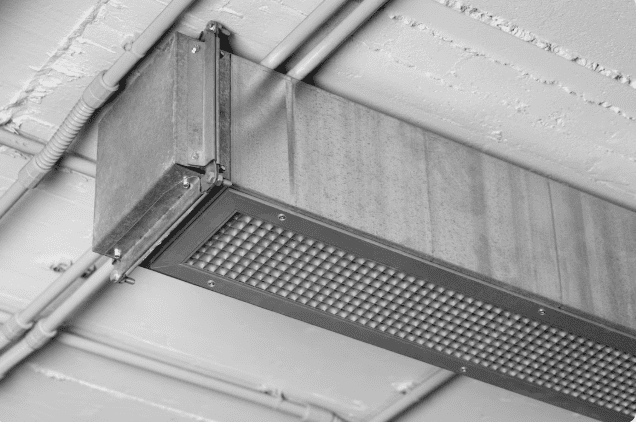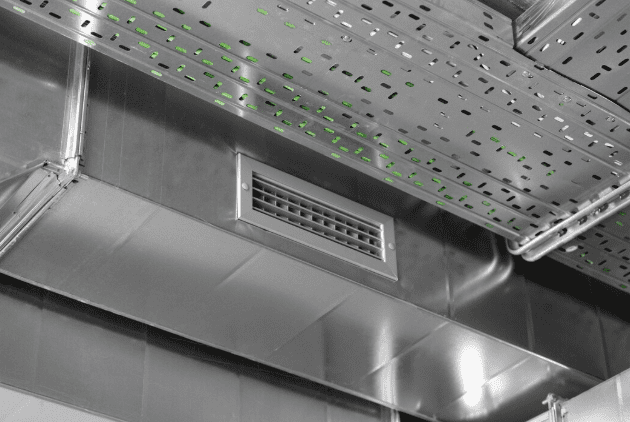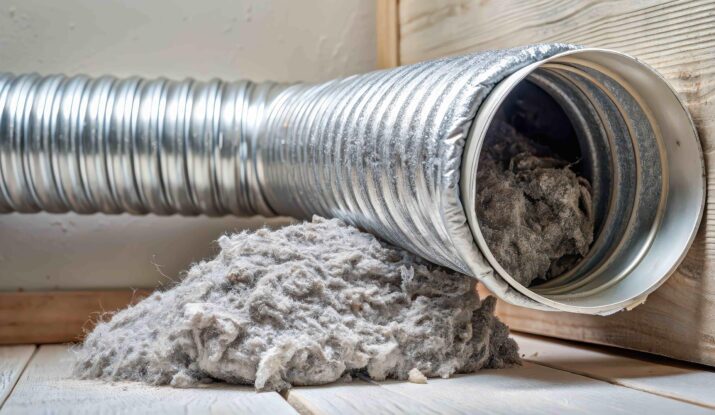Woodland’s Top 5 Most Common Dryer Vent Problems (and How to Prevent Them)
We’ve been inside hundreds of Woodland homes over the years, and one thing we can tell you with certainty is this: dryer vents get ignored far too often. People pay attention to their AC filters, they think about their air ducts once in a while, but the dryer vent? It’s usually out of sight, out of mind, until clothes take forever to dry, the laundry room smells like mildew, or worse, a fire almost starts.
At Mighty Ducts Of Texas, we’ve made it our mission to keep families safe and comfortable through dryer vent cleaning in The Woodlands. We’ve seen just about every problem imaginable, and the truth is, Woodland’s unique climate makes certain issues show up again and again. The good news? With the right care, you can prevent most of them.
Here are the top 5 dryer vent problems we see every week across Woodland, and how you can stop them from turning into costly or dangerous headaches.
Problem 1: Clogged Dryer Vents From Lint Buildup
The number one issue, hands down, is lint buildup. Even if you clean the lint screen faithfully after every load, small fibers always escape. Over months and years, they coat the inside of the dryer vent line. Eventually, that fluffy blanket of lint narrows the airflow until the dryer vent can’t breathe.
In Woodland, where many homes run laundry several times a week for large families, lint builds up fast. We’ve seen dryer vents nearly sealed shut. Not only does this make your dryer work harder, but it’s also a serious fire hazard.
How do you know your dryer vent is clogged?
- Clothes take two or three cycles to dry
- The outside dryer vent flap barely moves when the dryer is on
- The dryer vent feels hot to the touch along its run
- A burning or musty smell comes from the laundry room
How we prevent it: Our dryer vent cleaning The Woodlands, TX service uses specialized brushes and vacuums to remove the lint all the way through the dryer vent line. Not just the section you can reach behind the dryer, but the entire dryer vent run, elbows and all. When we finish, air flows freely again, and your dryer doesn’t struggle.
Problem 2: Dryer Vent Leaks or Disconnected Joints

We’ve crawled through countless attics in the Woodland heat, and one of the most common sights is a dryer vent pipe that has separated at the joints. Sometimes a clamp loosened, other times poor installation let a section slip apart. The result is lint, hot air, and moisture blowing directly into the attic or crawlspace.
Why is this dangerous? That combination of lint and heat is a recipe for fire, and trapped moisture leads to mold. You might also notice higher humidity in your laundry room or the attic, feeling hotter than it should.
Typical signs of dryer vent leaks:
- Hot, humid laundry area
- Lint is scattered in the attic near the dryer vent pipe
- Musty smells are coming through the ceiling
Prevention tips we follow on every job:
- We secure dryer vent joints with proper clamps and UL-listed foil tape (never duct tape, which fails quickly).
- We inspect every inch of the dryer vent line during a dryer vent cleaning service in Woodland to ensure nothing has come loose.
- If a dryer vent run is poorly installed, we can reconfigure it for safety and efficiency.
Problem 3: Long, Twisty Dryer Vents That Restrict Airflow
Woodland homes often have laundry rooms located far from exterior walls. That means long dryer vent runs with multiple bends to get outside. The longer and twistier the dryer vent, the harder it is for air to escape. Lint collects faster in these spots, and airflow weakens dramatically.
We’ve worked on homes where the dryer vent ran 25 feet or more with three or four elbows. In those cases, lint buildup can happen in just a few months. Dryers in homes like this often cycle endlessly, spiking your electricity bills.
Red flags of poor dryer vent routing:
- Dryer cycles take 2x as long as they used to
- Laundry room heat builds up after every load
- You barely feel air coming out of the dryer vent termination hood outside
How to stay ahead of it:
- Schedule dryer vent cleaning in Woodland, TX, more often than once a year (expert says) if your dryer vent is long or has multiple bends
- Consider a booster fan installation if the dryer vent airflow is especially weak
- Keep the dryer vent run as short and straight as possible during remodels or renovations
Our dryer vent cleaning service includes evaluating the routing, so we’ll always tell you if changes would improve your setup.
Problem 4: Moisture, Mold, and Pests in the Dryer Vent
One of the biggest surprises for homeowners is how much moisture a dryer vent can release. If the dryer vent isn’t sealed tightly or the termination outside is damaged, humid air leaks into attics and crawlspaces. Over time, this encourages mold growth or attracts pests like rodents, birds, or insects looking for warmth and shelter.
We’ve pulled entire bird nests out of Woodland dryer vents. We’ve also found damp insulation rotting around a dryer vent leak. These issues don’t just smell bad; they also affect air quality in the home.
How to tell if moisture or pests are in your dryer vent:
- Musty odor near the laundry area or attic hatch
- Water stains around the dryer vent exit point
- Birds or rodents nesting in the dryer vent termination hood
- Droppings or scratching noises near the dryer vent run
How do we prevent it during our service:
- When we perform dryer vent cleaning in Woodland, we check the termination hood, flap, and screens
- We clear out nests or obstructions safely
- We seal any dryer vent leaks and add pest guards where needed
- Our dryer vent cleaning service also includes inspecting insulation for moisture damage
Problem 5: Unsafe Dryer Vent Materials

It’s shocking, but we still find homes using plastic or flimsy foil accordion dryer vent tubing. These materials sag, trap lint, and in Woodland’s attic, they break down faster than you think. They’re not up to code and absolutely unsafe.
Rigid or semi-rigid metal dryer venting is the standard because it’s smooth, durable, and resistant to heat. If your dryer vent runs use the wrong material, you’re facing constant clogs and a higher fire risk.
Clues your dryer vent material isn’t right:
- Soft or crushed tubing behind the dryer
- Visible kinks or accordion ridges in the dryer vent line
- Frequent clogs despite regular filter cleaning
How to fix it:
- Replace all non-code dryer venting with rigid or semi-rigid metal ducting.
- During our Woodland dryer vent cleaning service, we check for material safety and always recommend upgrades if your current dryer vent setup is risky.
- A company that cleans dryer vents should always be honest about unsafe materials; it’s about your safety, not just airflow.
Book Your Dryer Vent Cleaning Service in Woodland Today
Don’t wait until your dryer vent is running hot, your clothes take forever to dry, or you smell something burning. Schedule a professional dryer vent cleaning in Woodland, TX with Mighty Ducts Of Texas today. Our clean dryer vent service ensures your home is safe, efficient, and worry-free.
We also serve nearby cities: Conroe, Magnolia, and Montgomery.
Call us now or book online to experience why we’re Woodland’s trusted name in dryer vent cleaning services in Texas.

